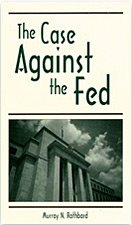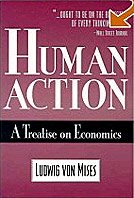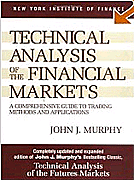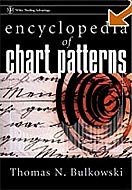Gold rally fills vaults with bullion as bank stimulus increases
By Pham-Duy Nguyen and Nicholas Larkin
Bloomberg News
The same unprecedented steps that central bankers are taking to rescue the banking system are driving investors to gold, the commodity investors buy when they lose confidence in financial assets.
David Einhorn, manager of the $5.1 billion Greenlight Capital Inc. hedge fund, bought gold for the first time. Steven Lehman, the Federated Investors Inc. fund manager who beat 99 percent of his peers last year, is betting on bullion with Toronto-based Yamana Gold Inc. and Goldcorp Inc.
The combination of central banks spending trillions of dollars to prop up the banking system in the worst financial crisis since the Great Depression will cause gold to appreciate at least 17 percent this year from $882.05 an ounce on Dec. 31, surpassing the record of $1,032.70 in London, according to 16 of 24 analysts surveyed by the London Bullion Market Association. The metal traded at $909.10 yesterday.
"The government can print endless money, but they cannot increase the supply of gold," said Michael Pento, chief economist at Delta Global Advisors Inc. in Huntington Beach, California, who is doubling holdings of the precious metal to 8 percent of his $1.5 billion in assets. "Anything the government cannot replicate by decree, I want to own."
Investors typically buy gold during times of financial turmoil as a store of value. The commodity has gained in five of the past six U.S. recessions.
To rescue the U.S. economy, the Federal Reserve reduced its target interest rate for overnight loans between banks to as low as zero percent, more than doubled its total assets during the past year and agreed to buy long-term Treasuries. The government pledged $8.5 trillion on behalf of American taxpayers and spent $350 billion so far under the Troubled Asset Relief Program to bail out banks.
The U.S. House passed an $819 billion economic stimulus package this week, Germany pledged 80.3 billion euros ($104 million) over two years and China is spending 4 trillion yuan ($585 billion) on infrastructure projects.
George Soros, the billionaire hedge-fund owner, said the economy "will deteriorate" and the International Monetary Fund said growth this year will slow close to zero. Analysts predict that the U.S. contracted 5.5 percent in the fourth quarter, the fastest pace since the start of 1982.
Only 20 percent of 1,124 chief executive officers surveyed by PricewaterhouseCoopers LLP expect revenue to increase this year, according to a report released as leaders met at the World Economic Forum in Davos, Switzerland, this week.
The U.S. Mint suspended sales of American Buffalo 1-ounce gold coins in September after supplies ran out. The Perth Mint, producer of so-called Kangaroo and Nugget coins in Australia, said in October that it doubled output in six months. Muenze Oesterreich AG, the Austrian mint, almost quadrupled production of its Philharmonic coin in the first nine months of 2008.
Holdings in the SPDR Gold Trust, the largest exchange-traded fund backed by bullion, exceed the gold reserves of all but five central banks and the IMF. Switzerland's Zuercher Kantonalbank in October said its gold vault was full.
Investment demand for gold bars may climb 49 percent to 201 metric tons in the first half of 2009, according to London-based researcher GFMS Ltd. Frederic Panizzutti, senior vice president at Geneva bullion refiner MKS Finance SA and the most accurate forecaster in the 2008 London Bullion Market survey, said the peak will be breached before July.
Greenlight's Einhorn, in a Jan. 20 letter to clients, said he was buying bullion and shares of the Market Vectors Gold Miners exchange-traded fund in response to the Federal Reserve's "exploding" balance sheet. Steven Lehman's $1.3 billion Federated Market Opportunity Fund beat the Standard and Poor's 500 Index by 30 percentage points last year.
The Fed's assets grew by $1 trillion over the past year after the central bank provided $416 billion in term loans to banks and purchased $350 billion of commercial paper issued by U.S. corporations.
Bullion is already up 16 percent since December 2007, the date that the Cambridge, Massachusetts-based National Bureau of Economic Research says was the start of the current recession. The biggest gain came in the 1973-1975 slowdown, when gold advanced 88 percent.
This year, the world economy will expand 0.5 percent, the IMF said Jan. 28, predicting that more than $2 trillion of bad assets from the U.S. will sink economies from Russia to the U.K. The majority of American banks are insolvent, Nouriel Roubini, the New York University professor who predicted the financial crisis, said in an interview in Davos.
While economists expect the U.S. to return to growth in the second half of this year, they also predict the return of inflation as soon as the fourth quarter. Consumer prices will rise 1.25 percent in the U.S., according to a Bloomberg survey.
The difference between rates on 10-year notes and Treasury Inflation Protected Securities, which reflects the outlook among traders for consumer prices, widened as the House passed the $819 billion economic stimulus.
The spread increased to 98 basis points from nine basis points at the end of last year. The U.S. recession brought the figure down from 2.34 percentage points six months ago.
Treasuries, which typically decline when inflation accelerates and diminishes the value of their fixed payments, fell 2.3 percent in January, according to Merrill Lynch & Co.'s U.S. Treasury Master index. The Standard and Poor's 500 Index dropped 6.4 percent, following its worst year since 1937.
"Gold is the ultimate currency hedge," said Michael Darda, chief economist at research company MKM Partners LP in Greenwich, Connecticut, who expects gold to surpass $1,000 this year. "If central banks are going to shovel massive amounts of paper out there, gold will ultimately respond to that."
Gold rose 5.8 percent last year as the Reuters/Jefferies CRB Index of 19 raw materials fell 36 percent, the worst year in a half-century. The metal was one of four commodities to gain, along with cocoa, sugar and lean hogs, and the only one to extend its winning streak to eight years. Oil and copper fell 54 percent.
The risk for investors is that government efforts to revive growth take hold. Seventeen months after seizing up at the onset of the credit crisis, the $1.69 trillion commercial paper market may be the first to cut its reliance on federal bailout programs.
About $245 billion of 90-day commercial paper that companies sold to the Federal Reserve will mature this week and next, central bank data show. As much as $50 billion to $70 billion of the debt may be rolled over and bought by investors, according to Barclays Capital in New York.
The difference between what banks charge each other for three-month loans and the rate the Treasury pays, the so-called TED spread, narrowed to 0.95 percentage point yesterday, down from 4.64 points on Oct. 10.
The Chicago Board Options Exchange Volatility Index, a measure of investor concern about stock market declines, lost 47 percent from its record close in November, according to data compiled by Bloomberg. That was the steepest 10-week retreat since the gauge began in 1990.
Gold has disappointed investors before. While the metal reached a record in 1980, the closing price in 2005 was little changed from that in 1979. On an inflation-adjusted basis, gold costs about the same as in 1981.
Fed officials warned this week of a prolonged global economic slowdown that may push the U.S. to the brink of deflation.
"Maybe this excessive easing will one day become inflationary, but we don't see inflation this year," said James Steel, an analyst at HSBC Securities in New York. "The climate is deflationary. Gold has never had a sustained rally in an era of deflation."
Steel expects gold to average $825 this year. The metal averaged $872.25 last year in London and $873.98 in New York.
Bullion rose 11 percent in euros last year and 44 percent in British pounds, protecting holders of those currencies as the dollar strengthened. Gold reached a record in pounds on Jan. 23.
The gain in gold denominated in euros and pounds "represents a mistrust of global economies," said Gerry Schubert, a director at Fortis in London.
Fed Chairman Ben S. Bernanke, who has said he prefers the inflation rate between 1 percent and 2 percent, will miss his target as the economy recovers, said John Brynjolfsson, a managing director and the chief investment officer at hedge fund Armored Wolf LLC in Aliso Viejo, California.
"It would be absurd to think that Bernanke would be able to nail a 1 to 2 percent Goldilocks inflation rate coming out of this," Brynjolfsson said. "What you have is competitive devaluation of all currencies around the world. Precious metals are the only hedge in this kind of environment. The trend of gold over the next five years is a straight line toward $1,700.'
* * *
Bloomberg News
The same unprecedented steps that central bankers are taking to rescue the banking system are driving investors to gold, the commodity investors buy when they lose confidence in financial assets.
David Einhorn, manager of the $5.1 billion Greenlight Capital Inc. hedge fund, bought gold for the first time. Steven Lehman, the Federated Investors Inc. fund manager who beat 99 percent of his peers last year, is betting on bullion with Toronto-based Yamana Gold Inc. and Goldcorp Inc.
The combination of central banks spending trillions of dollars to prop up the banking system in the worst financial crisis since the Great Depression will cause gold to appreciate at least 17 percent this year from $882.05 an ounce on Dec. 31, surpassing the record of $1,032.70 in London, according to 16 of 24 analysts surveyed by the London Bullion Market Association. The metal traded at $909.10 yesterday.
"The government can print endless money, but they cannot increase the supply of gold," said Michael Pento, chief economist at Delta Global Advisors Inc. in Huntington Beach, California, who is doubling holdings of the precious metal to 8 percent of his $1.5 billion in assets. "Anything the government cannot replicate by decree, I want to own."
Investors typically buy gold during times of financial turmoil as a store of value. The commodity has gained in five of the past six U.S. recessions.
To rescue the U.S. economy, the Federal Reserve reduced its target interest rate for overnight loans between banks to as low as zero percent, more than doubled its total assets during the past year and agreed to buy long-term Treasuries. The government pledged $8.5 trillion on behalf of American taxpayers and spent $350 billion so far under the Troubled Asset Relief Program to bail out banks.
The U.S. House passed an $819 billion economic stimulus package this week, Germany pledged 80.3 billion euros ($104 million) over two years and China is spending 4 trillion yuan ($585 billion) on infrastructure projects.
George Soros, the billionaire hedge-fund owner, said the economy "will deteriorate" and the International Monetary Fund said growth this year will slow close to zero. Analysts predict that the U.S. contracted 5.5 percent in the fourth quarter, the fastest pace since the start of 1982.
Only 20 percent of 1,124 chief executive officers surveyed by PricewaterhouseCoopers LLP expect revenue to increase this year, according to a report released as leaders met at the World Economic Forum in Davos, Switzerland, this week.
The U.S. Mint suspended sales of American Buffalo 1-ounce gold coins in September after supplies ran out. The Perth Mint, producer of so-called Kangaroo and Nugget coins in Australia, said in October that it doubled output in six months. Muenze Oesterreich AG, the Austrian mint, almost quadrupled production of its Philharmonic coin in the first nine months of 2008.
Holdings in the SPDR Gold Trust, the largest exchange-traded fund backed by bullion, exceed the gold reserves of all but five central banks and the IMF. Switzerland's Zuercher Kantonalbank in October said its gold vault was full.
Investment demand for gold bars may climb 49 percent to 201 metric tons in the first half of 2009, according to London-based researcher GFMS Ltd. Frederic Panizzutti, senior vice president at Geneva bullion refiner MKS Finance SA and the most accurate forecaster in the 2008 London Bullion Market survey, said the peak will be breached before July.
Greenlight's Einhorn, in a Jan. 20 letter to clients, said he was buying bullion and shares of the Market Vectors Gold Miners exchange-traded fund in response to the Federal Reserve's "exploding" balance sheet. Steven Lehman's $1.3 billion Federated Market Opportunity Fund beat the Standard and Poor's 500 Index by 30 percentage points last year.
The Fed's assets grew by $1 trillion over the past year after the central bank provided $416 billion in term loans to banks and purchased $350 billion of commercial paper issued by U.S. corporations.
Bullion is already up 16 percent since December 2007, the date that the Cambridge, Massachusetts-based National Bureau of Economic Research says was the start of the current recession. The biggest gain came in the 1973-1975 slowdown, when gold advanced 88 percent.
This year, the world economy will expand 0.5 percent, the IMF said Jan. 28, predicting that more than $2 trillion of bad assets from the U.S. will sink economies from Russia to the U.K. The majority of American banks are insolvent, Nouriel Roubini, the New York University professor who predicted the financial crisis, said in an interview in Davos.
While economists expect the U.S. to return to growth in the second half of this year, they also predict the return of inflation as soon as the fourth quarter. Consumer prices will rise 1.25 percent in the U.S., according to a Bloomberg survey.
The difference between rates on 10-year notes and Treasury Inflation Protected Securities, which reflects the outlook among traders for consumer prices, widened as the House passed the $819 billion economic stimulus.
The spread increased to 98 basis points from nine basis points at the end of last year. The U.S. recession brought the figure down from 2.34 percentage points six months ago.
Treasuries, which typically decline when inflation accelerates and diminishes the value of their fixed payments, fell 2.3 percent in January, according to Merrill Lynch & Co.'s U.S. Treasury Master index. The Standard and Poor's 500 Index dropped 6.4 percent, following its worst year since 1937.
"Gold is the ultimate currency hedge," said Michael Darda, chief economist at research company MKM Partners LP in Greenwich, Connecticut, who expects gold to surpass $1,000 this year. "If central banks are going to shovel massive amounts of paper out there, gold will ultimately respond to that."
Gold rose 5.8 percent last year as the Reuters/Jefferies CRB Index of 19 raw materials fell 36 percent, the worst year in a half-century. The metal was one of four commodities to gain, along with cocoa, sugar and lean hogs, and the only one to extend its winning streak to eight years. Oil and copper fell 54 percent.
The risk for investors is that government efforts to revive growth take hold. Seventeen months after seizing up at the onset of the credit crisis, the $1.69 trillion commercial paper market may be the first to cut its reliance on federal bailout programs.
About $245 billion of 90-day commercial paper that companies sold to the Federal Reserve will mature this week and next, central bank data show. As much as $50 billion to $70 billion of the debt may be rolled over and bought by investors, according to Barclays Capital in New York.
The difference between what banks charge each other for three-month loans and the rate the Treasury pays, the so-called TED spread, narrowed to 0.95 percentage point yesterday, down from 4.64 points on Oct. 10.
The Chicago Board Options Exchange Volatility Index, a measure of investor concern about stock market declines, lost 47 percent from its record close in November, according to data compiled by Bloomberg. That was the steepest 10-week retreat since the gauge began in 1990.
Gold has disappointed investors before. While the metal reached a record in 1980, the closing price in 2005 was little changed from that in 1979. On an inflation-adjusted basis, gold costs about the same as in 1981.
Fed officials warned this week of a prolonged global economic slowdown that may push the U.S. to the brink of deflation.
"Maybe this excessive easing will one day become inflationary, but we don't see inflation this year," said James Steel, an analyst at HSBC Securities in New York. "The climate is deflationary. Gold has never had a sustained rally in an era of deflation."
Steel expects gold to average $825 this year. The metal averaged $872.25 last year in London and $873.98 in New York.
Bullion rose 11 percent in euros last year and 44 percent in British pounds, protecting holders of those currencies as the dollar strengthened. Gold reached a record in pounds on Jan. 23.
The gain in gold denominated in euros and pounds "represents a mistrust of global economies," said Gerry Schubert, a director at Fortis in London.
Fed Chairman Ben S. Bernanke, who has said he prefers the inflation rate between 1 percent and 2 percent, will miss his target as the economy recovers, said John Brynjolfsson, a managing director and the chief investment officer at hedge fund Armored Wolf LLC in Aliso Viejo, California.
"It would be absurd to think that Bernanke would be able to nail a 1 to 2 percent Goldilocks inflation rate coming out of this," Brynjolfsson said. "What you have is competitive devaluation of all currencies around the world. Precious metals are the only hedge in this kind of environment. The trend of gold over the next five years is a straight line toward $1,700.'
* * *
Labels: financial crisis, gold















![[Most Recent Quotes from www.kitco.com] [Most Recent Quotes from www.kitco.com]](http://www.kitco.com/images/live/t24_au_en_usoz_6.gif)
![[Most Recent Quotes from www.kitco.com] [Most Recent Quotes from www.kitco.com]](http://www.kitco.com/images/live/au_go_0030_ny.gif)
![[Most Recent Quotes from www.kitco.com] [Most Recent Quotes from www.kitco.com]](http://www.kitco.com/images/live/au_go_0365_ny.gif)
![[Most Recent Quotes from www.kitco.com] [Most Recent Quotes from www.kitco.com]](http://kitconet.com/charts/metals/silver/t24_ag_en_usoz_4.gif)

















0 ΣΧΟΛΙΑ (COMMENTS):
Post a Comment
<< Home